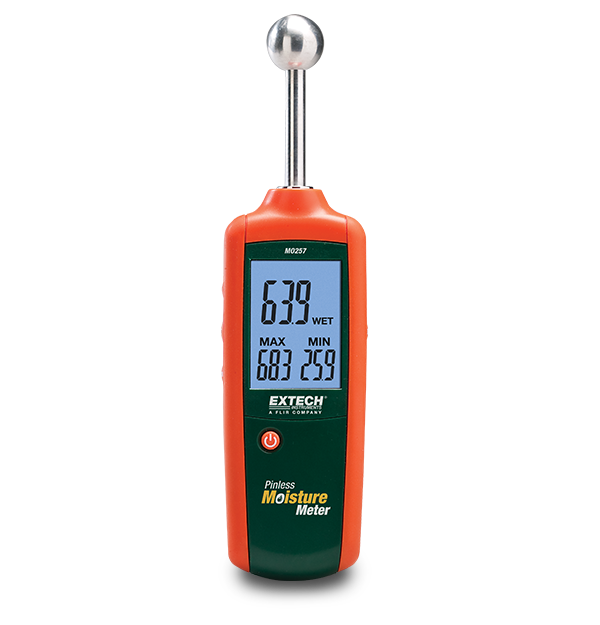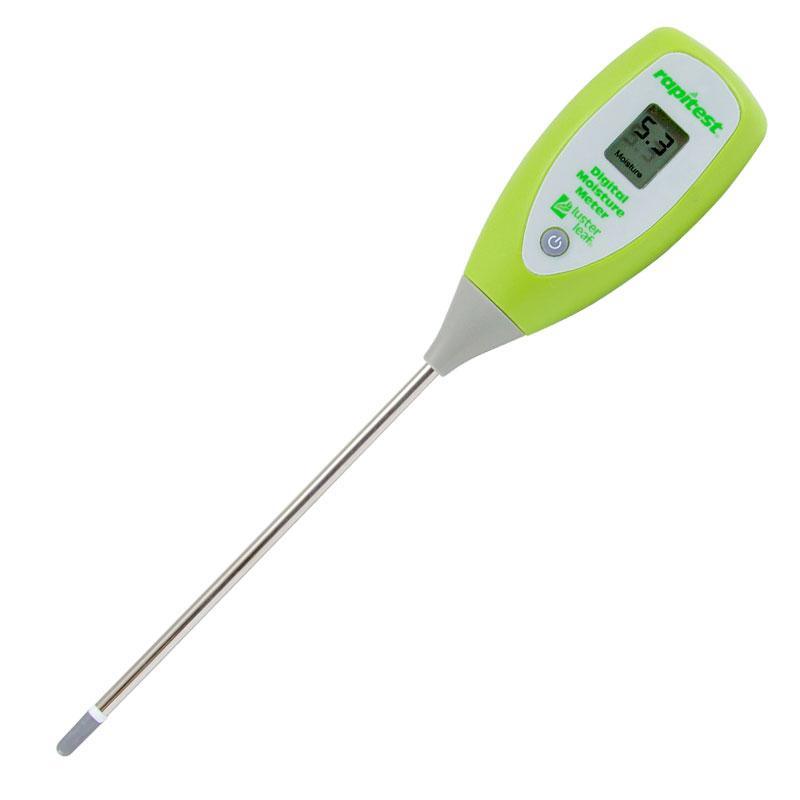The Science Behind Moisture Meters: Exactly How They Function and Why They're Important
The Science Behind Moisture Meters: Exactly How They Function and Why They're Important
Blog Article
Delve Into the World of Wetness Meters: Every Little Thing You Need to Know
In the realm of wetness meters lies a world of precision and practicality that often goes unnoticed. Comprehending how moisture meters run, the different types available, and their diverse usages can drop light on their relevance in making certain quality and performance.
Just How Moisture Meters Job
Wetness meters run by measuring the electrical conductivity or capacitance of materials to figure out the wetness web content existing - Moisture Meter. These meters are vital devices across various sectors, consisting of building and construction, woodworking, and agriculture. By utilizing various methods such as pinless or pin-type modern technology, wetness meters supply precise analyses that help specialists make informed decisions
Pin-type dampness meters work by putting the sharp pins into the product being checked. On the various other hand, pinless dampness meters utilize electromagnetic signals to check a larger area without triggering any damage to the material's surface.
Despite the method used, moisture meters play an essential duty in stopping issues such as mold and mildew development, architectural damages, or item flaws caused by excess moisture. Recognizing exactly how these meters job is important for making sure the high quality and stability of materials in various applications.
Sorts Of Moisture Meters
Given the essential function wetness meters play in various sectors, it is vital to recognize the various types available to professionals for accurately assessing dampness levels. There are mainly two primary kinds of moisture meters: pin-type and pinless wetness meters.
Pin-type moisture meters utilize 2 pins that are placed right into the product being checked to determine the electric resistance between them. This technique is commonly utilized for timber, drywall, and various other structure materials. Pin-type meters provide specific readings at specific midsts, making them optimal for determining moisture gradients.
On the various other hand, pinless moisture meters utilize electromagnetic sensing unit plates to check a larger area of the material without causing any kind of damages. This type is suitable for swiftly scanning huge locations and is typically used for flooring, walls, and ceilings. Pinless meters are convenient for taking analyses on completed surface areas without leaving any type of noticeable marks.
Both kinds of moisture meters have their benefits and are picked based upon the certain requirements of the work at hand. Understanding the differences between these types is essential for professionals to make accurate moisture analyses.
Applications Across Industries
Construction experts rely on wetness meters to evaluate the dampness levels in structure products like concrete, drywall, and wood, which is essential for keeping architectural integrity and protecting against concerns like rot or mold. The flooring industry utilizes dampness meters to determine the wetness content in subfloors prior to setting up different flooring coverings, avoiding costly problems due to excess wetness. In the food industry, moisture meters are made use of to monitor and manage moisture degrees in items such as grains, nuts, and dried fruits to keep freshness and top quality.
Tips for Utilizing Wetness Meters
Utilize the moisture meter's calibration settings to ensure exact readings when measuring the moisture content in various products. Calibration is critical for the appropriate performance of a dampness meter. Prior to each use, it is advisable to examine and adjust the calibration setups according to the details material being checked. Furthermore, make certain the meter is readied to the appropriate wetness variety for the you can find out more material you are measuring to acquire one of the most specific results.

When using a pin-type dampness meter, put the pins to the ideal depth advised for the material being examined. This makes sure that the wetness analyses are extracted from the appropriate deepness within the material, giving a much more accurate depiction of its dampness content. For pinless moisture meters, keep in mind to keep correct contact with the product's surface to obtain trustworthy analyses.

On a regular basis examine and replace the batteries in your moisture meter to stop imprecise analyses due to low power. When not in use to prolong its read life-span and maintain its precision, Store the meter in a secure and dry place. By complying with these pointers, you can make the most of the performance of your wetness meter and get exact wetness web content measurements across various products.

Upkeep and Calibration
To ensure the accuracy of wetness web content measurements, regular upkeep and calibration of the wetness meter are crucial actions in its correct functioning. Calibration visit this page adjusts the wetness meter to make sure that it offers trustworthy and constant outcomes.
Calibration must be carried out regularly, especially if the moisture meter is made use of regularly or in crucial applications where specific measurements are needed. By keeping and adjusting the dampness meter consistently, individuals can trust the precision of the moisture web content dimensions acquired.
Final Thought
Finally, wetness meters play an important duty in various sectors by precisely measuring the dampness web content of products. Comprehending how these gadgets work, the various types available, and proper upkeep and calibration are important for obtaining reliable outcomes. Whether in manufacturing, farming, or construction, using wetness meters helps guarantee top quality control and performance in processes.
Building and construction experts depend on moisture meters to analyze the moisture degrees in structure products like drywall, concrete, and timber, which is critical for preserving structural integrity and preventing concerns like rot or mold and mildew. The floor covering industry utilizes moisture meters to measure the dampness web content in subfloors prior to installing different floor coverings, avoiding expensive problems due to excess dampness.Use the moisture meter's calibration settings to make certain accurate analyses when gauging the moisture material in different products. By following these tips, you can optimize the efficiency of your moisture meter and get precise wetness web content measurements across different products.
In final thought, dampness meters play an important role in different markets by accurately measuring the moisture material of products.
Report this page